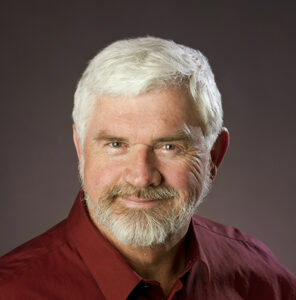Holocaust Remembrance Day, lest we forget
April 17, 2023

Gordon Mullin
OPINION by GORDON MULLIN
The first time I met a holocaust survivor was in 1979. I was working in a kitchen cabinet factory in Richmond, British Columbia and Marija was working there with her son.
One day I noted that she had numbers tattooed on her forearm and I asked about them. Marija was from Croatia and her accent made discussions difficult but she told me that she was interned in a work camp during WWII. Clearly she was reluctant to discuss that part of her life and I let it go. I didn’t want to make her uncomfortable by prodding into those horrific days.
Over 30,000 Crotian Jews, out of a population of 37,000 were slaughtered by the Croatian fascist Ustaša police or were shipped to death camps, principally Auschwitz, between 1941 to 1945.
Marija’s story is one among the thousands of Jews who managed to escape the slaughter. In the mid 1930’s there were 9.5 million Jews in Europe. By 1945, two-thirds of them would be dead.
Every Jewish family was touched in some way by the horror. In North America, Jews usually had firm family connections with brothers and sisters, cousins, parents and grandparents in the old country who they would never see again.
My children’s Jewish maternal grandparents escaped Poland late in the war and survived only by posing as Polish Catholics and creating new identities for themselves with the help of the underground. They came from large families, as was typical in the mid twentieth century but by war’s end in 1945, only two cousins survived. All the rest were, in Nazi terms, exterminated.
Several of my in-law’s family were executed by the Russians in the Katyn forest massacres (22,000 shot) in May of 1940. A phrase I often heard around the dinner table, “if the Nazis didn’t kill us, the Russians did.” If you wonder why the Polish government is such an ardent supporter of Ukraine in the war against Russia, ask a Pole about their Russian treatment during WWII. The Soviets deported 1.2 million Poles for forced labor or resettlement.
The Holocaust also targeted other communities in Europe. The Nazi’s goal was to cleanse Germany and its subjugated states of undesirables. While Jews were especially hated and viewed as a threat, other groups were sent to the camps as well.
Many Germans harbored social prejudice towards Roma (Gypsies in English). According to the U.S. Holocaust Museum (USHM) website, (from which much of the data below comes) starting in 1929, Roma had to register with the government. In 1933, the “asocial” and “racially inferior” Roma fell under the “Law for the Prevention of Offspring with Hereditary Defects” and thousands were sent to the death camps. The estimates of the dead Roma range between 250,000 and 500,000.
The Euthanasia Program was the systematic murder of institutionalized patients with disabilities. The purpose was to eliminate what eugenicists and their supporters considered “life unworthy of life:” those individuals who, because of severe psychiatric, neurological, or physical disabilities were considered both a genetic and a financial burden on German society and the state according to the USHM. Estimated deaths, 250,000.
The Nazi also targeted Jehovah’s Witnesses who were unwilling to accept the authority of the German state, and many refused to serve in Germany’s army. Killed- between 1,000 and 3,000.
The infamous Paragraph 175 of the German Criminal Code banned sexual acts between men but, oddly, did not apply to sexual acts between women. During the Nazi era, between 5,000 and 15,000 men were sent to concentration camps as homosexual offenders and were required to wear a pink triangle on their camp uniforms as part of the prisoner classification system. Half to two-thirds of those in the camps never came out again.
According to the USHM, the Nazis took great care toward the end of WWII to destroy as many documents as possible pertaining to the decimation of innocents. Despite substantial effort at gathering firsthand accounts from survivors, we can never know the exact extent of the Holocaust.
Sadly, the Nazis were not the only perpetrators of genocides in the twentieth century.
In 1928 to 1931, Stalin starved 10 million Kulaks (Ukrainian farmers) under the dream of collectivization. Thirty-million died under Mao Tse-tung’s Great Leap Forward.
The Turks murdered 600,000 to 1.5 million Armenians between 1915 to 1917. And the list goes on today in Syria, Iran and Iraq. Oddly, we have not yet created a worldwide Remembrance Day for these millions. Perhaps we should.
The internationally recognized date for Holocaust Remembrance Day corresponds to the 27th day of Nisan, April 17-18, on the Hebrew calendar and marks the anniversary of the Warsaw Ghetto Uprising.
On Sunday, April 30 at 4 p.m., Paul Wolfe, one of the last survivors, will talk about the Holocaust at Temple Ohr Tzafon, 2605 Traffic Way in Atascadero.






The comments below represent the opinion of the writer and do not represent the views or policies of CalCoastNews.com. Please address the Policies, events and arguments, not the person. Constructive debate is good; mockery, taunting, and name calling is not. Comment Guidelines